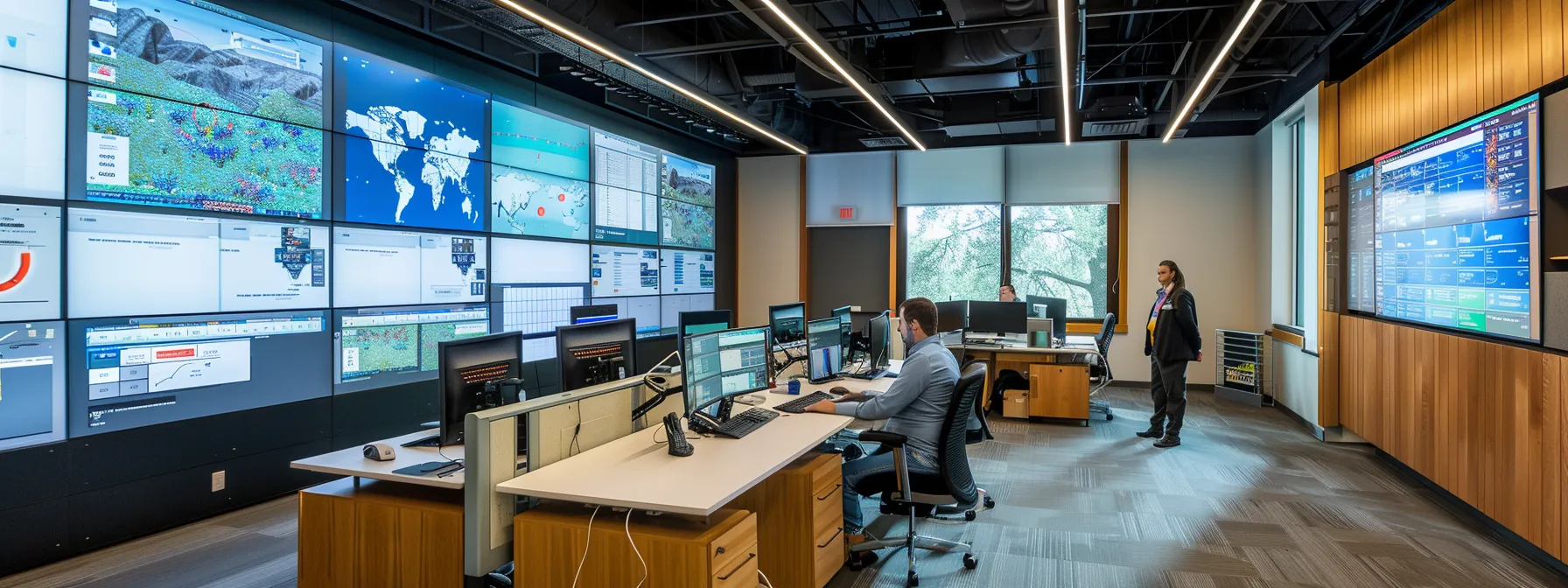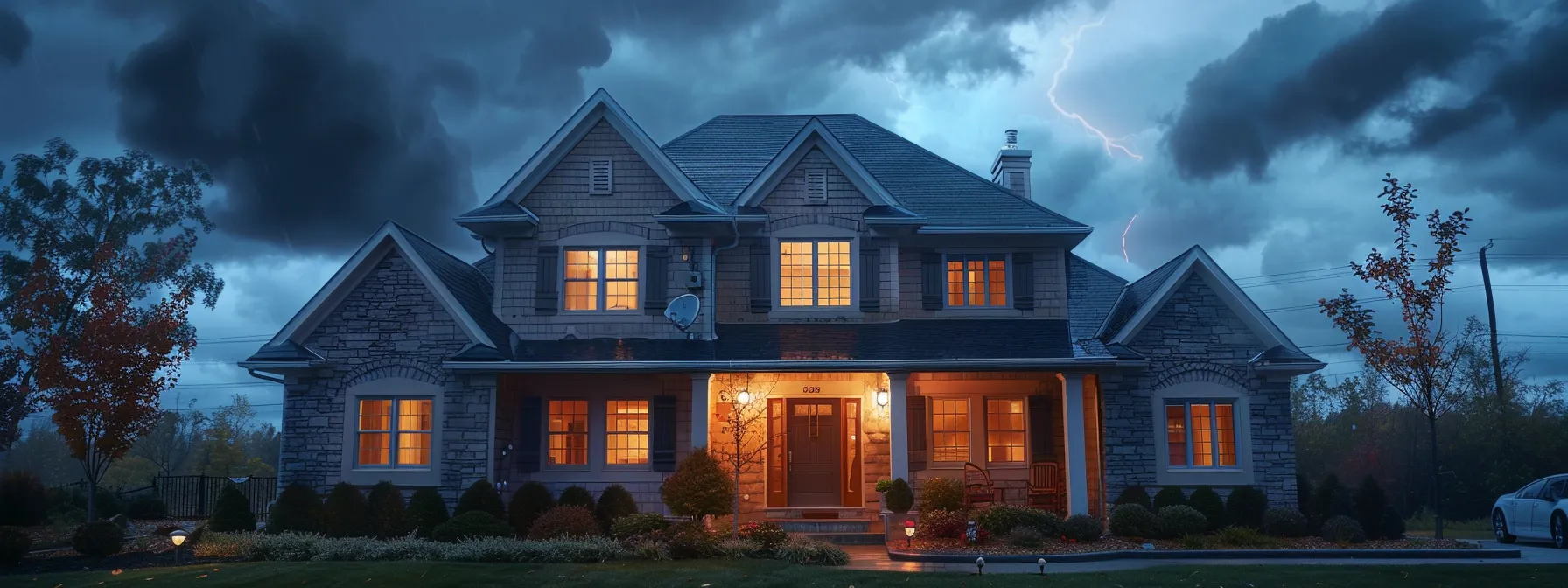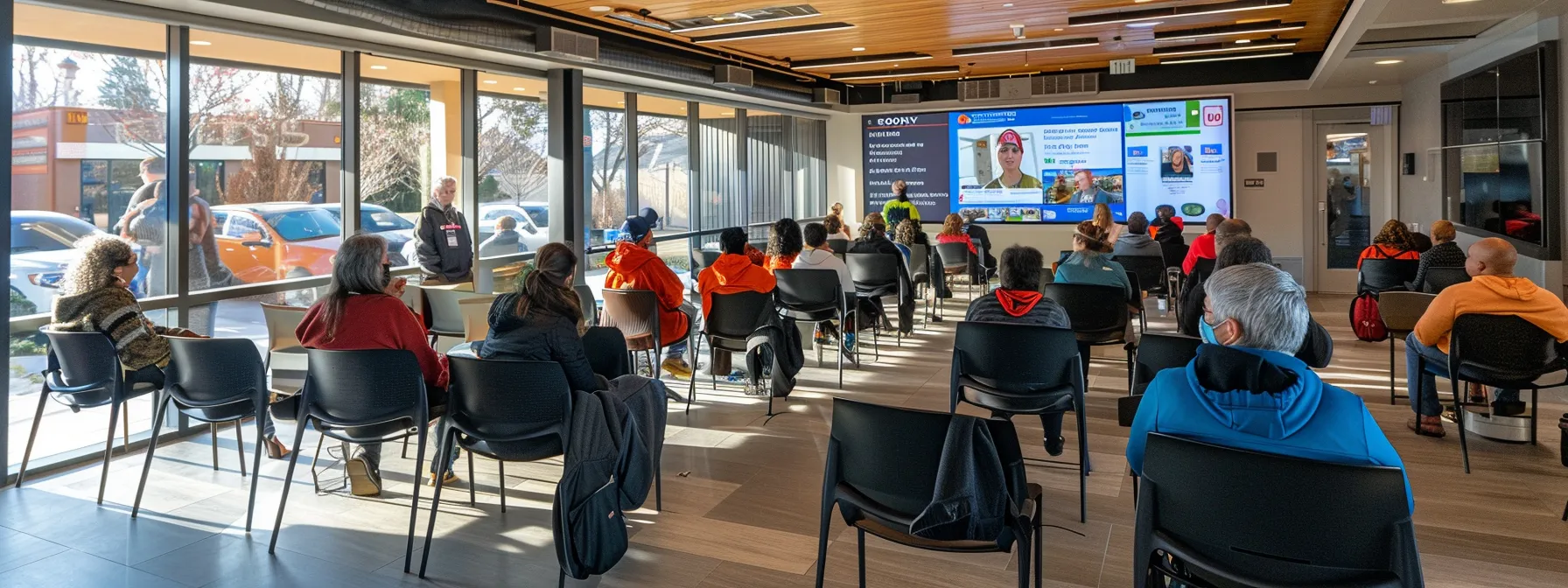
Extreme weather can put your home and security system at risk. Are you prepared for the unpredictable elements? This article will help homeowners assess their security needs, strengthen physical measures against severe conditions, and implement smart technology for better management. By the end, readers will understand how to safeguard their homes effectively and ensure their security systems remain functional in challenging weather. Don’t wait for a storm to hit—take proactive steps today to protect your home and loved ones.

It is essential to assess security needs before extreme weather hits. Homeowners should identify vulnerabilities in their current security system and evaluate potential weather challenges. Understanding which security system features, like landscaping and electronics, provide protection is critical. Consulting with security experts ensures tailored solutions while establishing a budget and creating a timeline for enhancements are vital for effective preparation.
Assessing vulnerabilities in a current security setup requires a thorough examination of the systems in place. Property managers should pay attention to the potential wear and tear that extreme weather can bring, which may affect the reliability of sensors or alarms. For example, freezing temperatures can impact the functionality of outdoor cameras and motion detectors, making it essential to ensure proper airflow and protection for these assets to maintain their effectiveness during adverse conditions.
Homeowners should consider the specific types of extreme weather that may occur in their area, such as floods, heavy snow, or severe storms. For instance, flooding can damage electrical systems, making preventive maintenance crucial for smoke detectors and HVAC systems to ensure they function correctly during emergencies. Understanding the frequency and severity of these weather events allows homeowners to take proactive measures, such as installing weather-resistant security features and regularly inspecting their systems to maintain optimal performance.
When deciding which security system features to implement, homeowners should consider the risks posed by extreme weather conditions. Incorporating durable outdoor equipment, such as ceiling-mounted cameras that can withstand various humidity levels, is essential for maintaining visibility during storms. Additionally, integrating irrigation systems with moisture sensors can help manage landscaping efficiently, while energy-efficient lighting enhances safety by ensuring proper illumination around the property, thus reducing potential vulnerabilities during adverse weather events.
Consulting with security experts is a key step in preparing a security system for extreme weather. Professionals can provide invaluable insights on critical elements, such as ensuring proper electrical wiring durability and recommending smart thermostats that maintain stable temperatures to prevent mold growth. Additionally, they can assess drainage concerns around the property, advising on preventative maintenance that keeps the entire system functioning effectively during adverse conditions.
Establishing a budget for security enhancements is a critical step in preparing a home for extreme weather. Homeowners must assess their current home security systems while factoring in potential costs for improvements, such as installing debris-resistant features and enhancing fire safety measures. A well-planned budget can help allocate funds efficiently for necessary upgrades, including efficient energy consumption devices like smart thermostats, which help maintain stable indoor conditions and can even monitor medication storage by ensuring consistent temperatures.
Creating a timeline for installing new security measures is vital for homeowners preparing for extreme weather conditions. This includes scheduling tasks such as upgrading a home insurance policy to cover potential damages, installing a first aid kit for emergencies, or arranging snow removal services to ensure safe access to properties. Additionally, planning for timely maintenance of systems like refrigerant in HVAC units and ensuring backup water supply can significantly enhance a home’s readiness for adverse weather events.

Homeowners can significantly enhance their security systems for extreme weather by reinforcing doors and windows against high winds and installing impact-resistant glass for added defense. Securing outdoor items helps prevent damage or theft, while motion sensor lighting increases visibility around the property. Setting up fencing or barriers improves overall protection, and checking landscaping for risk factors ensures that homes remain safe during storms. Each of these practical maintenance tasks contributes to a more robust security infrastructure, reducing the risk of burglary and ensuring peace of mind.
Reinforcing doors and windows against high winds is essential for enhancing home security during extreme weather. Homeowners should consider installing impact-resistant glass and storm shutters to minimize damage and prevent downtime during storms. Additionally, securing garage doors with heavy-duty locks and using a smart plug to monitor home security cameras can provide peace of mind by ensuring that these systems remain operational, allowing homeowners to maintain attention on their property’s safety during severe weather events.
Installing impact-resistant glass serves as a crucial enhancement for home security during extreme weather events. This type of glass can withstand high winds and flying debris, significantly reducing the risk of breakage that could compromise safety. Homeowners can complement these installations with devices like Google Nest, which offers smart monitoring capabilities, ensuring the property remains protected even during emergencies. As an added benefit, integrating solar power solutions with these systems can enhance energy efficiency, providing sustained operation of essential devices such as ceiling fans during severe weather, while helping to prevent wear and tear on traditional power sources.
Securing outdoor items is a critical step in preparing a home security system for extreme weather. During severe climate events, unsecured furniture, grills, and decorations can become projectiles, causing damage and potentially compromising safety. Homeowners should proactively secure these items by bringing them indoors or using weighted covers to prevent corrosion and damage from rain, snow, or debris such as leaves. Additionally, ensuring that flue pipes are secured can help mitigate risks, protecting both the home and its inhabitants during unpredictable weather conditions.
Utilizing motion sensor lighting around the property serves as an effective measure to enhance security during extreme weather. This type of lighting improves visibility, deterring potential hazards by ensuring any unexpected movement, whether from a vehicle or an intruder, is promptly illuminated. Additionally, the longevity and usability of such lighting systems are amplified by their ability to operate during various weather conditions, providing homeowners with peace of mind that their security is maintained even in inclement circumstances.
Setting up fencing or barriers around the property can significantly enhance protection against severe weather conditions. These structures not only deter potential intruders but also provide a physical barrier that can help redirect water runoff, preventing puddles that may lead to water damage. Regular maintenance and timely repairs of any fencing or barriers are crucial to ensure they comply with local regulations and are functional in emergencies, such as when first aid supplies need to be accessed quickly during a storm:
Checking landscaping for risk factors during storms is crucial for maintaining home security. Homeowners should conduct an evaluation of their outdoor spaces, ensuring cleanliness by removing debris and dead branches that could become hazardous during high winds. Additionally, considering automation options for gates can enhance security by allowing controlled access while lubricating moving parts ensures functionality during adverse weather conditions:

Employing smart technology enhances security management, especially during extreme weather. Selecting outdoor security cameras allows for real-time monitoring, while setting up motion detectors provides immediate alerts for intruders. Smart locks enable remote access control, and integrating alarm systems with weather alerts adds an extra layer of safety. Additionally, verifying compatibility with existing devices and exploring cloud storage for security footage ensures homeowners are well-prepared and protected.
Installing smart security cameras is a significant step in preparing a home for extreme weather. Homeowners should conduct an audit of their current security setup, ensuring cameras are placed strategically around the property, such as on the roof to monitor outdoor activity effectively. Using a checklist can help verify that all rooms are covered, providing real-time monitoring and alerts that enhance safety and security during severe weather conditions.
Setting up motion detectors is a proactive measure for enhancing security during extreme weather. These sensors can monitor unexpected activity around the property, promptly alerting homeowners of intruders. Integrating a computerized maintenance management system (CMMS) can streamline the monitoring process, ensuring that HVAC systems and security equipment remain operational and effectively maintained, allowing for a comprehensive safety policy that adjusts to various environmental conditions.
Using smart locks to control access remotely is a vital security feature for homeowners, especially during extreme weather. These advanced systems allow individuals to monitor their doors and grant or deny access from anywhere, ensuring protection against potential intruders while managing home entry during storms. Additionally, smart locks maintain compatibility with outdoor security systems and can integrate firmware updates that enhance their reliability, even when the power supply is disrupted. This capability is particularly beneficial for managing safety concerns such as carbon monoxide detection, allowing homeowners to respond quickly to any threats during unpredictable weather events.
Integrating alarm systems with weather alerts greatly enhances home safety during extreme weather events. This advanced feature allows homeowners to receive immediate notifications about severe conditions, enabling prompt action to protect their property and loved ones. For instance, an alarm system linked to a heating system can notify the user if temperatures drop significantly, potentially preventing issues related to frozen pipes, while also keeping air filters in check to ensure optimal operation during storms.
Testing the compatibility of new smart technology with existing security devices is a crucial step in preparing a home for extreme weather. Homeowners should ensure that all components, including smart locks, cameras, and alarm systems, communicate seamlessly, reducing the risk of operational waste during a storm. Utilizing a barcode scanner to catalog devices can streamline the integration process, enabling efficient backup systems to handle heat fluctuations or any unforeseen power interruptions, thus enhancing overall security and peace of mind.
Utilizing cloud storage for security footage enhances home safety by ensuring that critical video recordings are securely saved and easily accessible during extreme weather events. Homeowners in condominiums or houses can monitor activities around their property, whether it’s keeping an eye on a lawn during heavy rains or checking on a furnace to prevent heating issues due to fluctuating temperatures. This advanced method not only protects footage from physical damage but also allows for quick retrieval, providing peace of mind and assisting in troubleshooting potential issues like burst pipes or storm-related damage.

Regular maintenance of a security system is vital for effective preparation against extreme weather. Homeowners should schedule routine inspections of all equipment, test alarm systems and cameras periodically, and replace batteries and update software as needed. It’s essential to assess the condition of sensors and cables, review security footage for anomalies, and keep a maintenance log to track any issues that may affect indoor air quality or lead to water damage during winter snow and heavy rains.
Scheduling routine inspections of security equipment is essential for ensuring optimal efficiency and reliability, especially before extreme weather events. Homeowners should pay particular attention to utility systems, as dust accumulation can hinder the functionality of cameras and sensors, reducing their effectiveness when they are needed most. Regularly checking camera lenses and other equipment assists in maintaining clear visibility, enabling swift action during emergencies:
Testing alarm systems and cameras periodically is a key strategy for ensuring effective surveillance during extreme weather. Homeowners should regularly check their home automation systems to confirm that alarms activate as intended and cameras capture clear footage, especially crucial when monitoring conditions such as sudden storms or flooding. By maintaining these systems, homeowners can prevent unexpected failures, providing peace of mind that their property is protected and responsive to emergencies.
Homeowners should prioritize replacing batteries and updating software to ensure their security systems function optimally, especially during extreme weather. Neglecting to do so can lead to failures that might leave a property vulnerable during emergencies. For example, a malfunctioning smoke alarm or security camera due to dirt accumulation or outdated software can hinder responses when every second counts. Regular upkeep of these elements, including ensuring emergency exits are well-lit and accessible, minimizes risks and supports reliable operation of essential systems, including those for the chimney and other critical areas:
Assessing the condition of sensors and cables is vital for maintaining a reliable security system, especially before extreme weather events. Homeowners should ensure that all cables are securely connected and free from damage, as frayed cables can compromise system performance, particularly for critical components such as thermostats and condensers. Additionally, checking sensors for dirt or obstructed views will enhance their functionality, thus improving overall home safety by ensuring that alerts can be properly triggered and monitored through platforms like HomeKit.
Regularly reviewing security footage is crucial for effective facility management, especially in preparing for extreme weather events. This routine inspection helps identify anomalies that could indicate potential security breaches or environmental issues, such as water damage or mildew formation near doors. Additionally, monitoring video feeds ensures that systems like the carbon monoxide detector are functioning correctly, providing peace of mind to homeowners that their safety measures are in place and effective during adverse conditions.
Keeping a maintenance log is essential for homeowners aiming to prepare their security systems for extreme weather. Documenting each inspection and any issues encountered not only ensures accessibility to vital information but also helps track the effectiveness of implemented solutions. By following a structured maintenance checklist, homeowners can enhance their property’s market value, promote energy conservation, and address potential vulnerabilities before they escalate into serious problems.

Training family members on how to use security systems and respond to alerts is essential for preparedness. An emergency plan outlining actions during severe weather and security breaches creates a safety net. Regularly practicing drills ensures everyone knows their responsibilities. Post-event reviews can provide insights for improvement in asset management and system efficiency, supporting a robust spring maintenance routine for systems like heat pumps and electrical diagnostics.
Training family members on the proper use of security systems, such as security cameras and smart doorbells, is crucial for enhancing property management, especially during extreme weather events. Each individual should understand how to respond to alerts, such as detecting a leak or identifying the presence of pests, to mitigate potential risks effectively. Regular practice and demonstrations ensure everyone knows their roles, fostering a coordinated response to emergencies and enhancing the overall security strategy of the home.
Creating an emergency plan for extreme weather events is vital for ensuring household safety and security. Homeowners should establish clear procedures for using their security systems, including how to respond to alerts about air conditioning failures or valve malfunctions during storms. Additionally, regularly practicing drills in varying sunlight conditions can improve visibility and preparedness, enabling all family members to act swiftly when extreme weather strikes.
Discussing what to do during a security breach is essential for all household members. Homeowners should establish clear, actionable steps that everyone can follow, such as alerting local authorities, securing the premises by locking doors and windows, and documenting any suspicious activity. Regular discussions about these protocols empower family members, ensuring they understand the importance of prompt and appropriate responses to different security challenges, especially during extreme weather events:
Practicing drills for extreme weather preparedness is essential for all households. By routinely simulating emergency scenarios, family members can become familiar with security protocols and understand their roles during actual events. This hands-on approach enhances readiness, ensuring that everyone knows how to operate security systems, respond to alerts, and maintain safety during severe weather conditions, ultimately creating a more secure living environment.
Sharing responsibilities among family members is vital when preparing security systems for extreme weather. Each individual should know their specific roles, such as monitoring alerts from smart cameras or ensuring secure access points remain locked. By fostering teamwork and clear communication, families enhance their readiness and can respond effectively to emergencies, making the home a safer environment during severe weather events.
After severe weather events, homeowners should take the time to review their security protocols and identify areas for improvement. This reflection can help address any weaknesses that may have been exposed during the event, such as ineffective alarm responses or vulnerabilities in the home’s physical barriers. By analyzing these aspects, families can enhance their security measures, ensuring that they are better prepared for future extreme weather conditions and capable of protecting their property and loved ones more effectively.

Homeowners can enhance their security preparedness by staying informed about local weather and safety resources. Signing up for weather alerts ensures timely updates on severe conditions, while following local officials provides essential emergency information. Gathering community resources, attending safety workshops, connecting with neighbors, and using social media to share updates foster a proactive approach to safety initiatives during extreme weather events.
Signing up for weather alerts and notifications is a proactive measure homeowners can take to enhance their security preparedness during extreme weather events. These alerts provide timely updates on severe weather conditions, enabling individuals to act swiftly to protect their property and loved ones. For example, receiving a notification about an incoming storm allows homeowners to secure outdoor items and ensure their security systems are functioning properly:
Following local officials for emergency updates is essential for homeowners seeking to enhance their security preparedness during extreme weather. Authorities often provide critical information regarding severe weather alerts, evacuation routes, and safety measures tailored to specific areas. By regularly monitoring updates from local government agencies and emergency services, individuals can make informed decisions to protect their homes and loved ones effectively:
Gathering community resources for extreme weather is essential for enhancing a home’s security measures. Residents can connect with local organizations, such as neighborhood watch groups or emergency services, to share information and support during severe weather events. By participating in community meetings and safety workshops, homeowners can gain insights and strategies to effectively prepare their security systems, ensuring they are well-equipped to handle potential challenges posed by extreme weather conditions.
Attending safety workshops or community events provides homeowners with valuable insights into preparing their security systems for extreme weather. These gatherings often feature local experts who share practical strategies for enhancing home safety and resilience against severe weather conditions. By participating, families can learn about effective techniques for securing their properties, as well as connect with neighbors to foster a stronger community response to emergencies.
Connecting with neighbors for safety initiatives is an effective strategy for homeowners preparing their security systems for extreme weather. By fostering a network of communication, residents can share valuable information regarding local weather updates, safety protocols, and resources to enhance community resilience. Collaborative efforts, such as neighborhood watch programs or group emergency drills, not only improve individual preparedness but also create a supportive environment that strengthens overall community safety during severe weather events.
Utilizing social media to share important updates is an effective way for homeowners to stay informed about severe weather and safety resources. Platforms like Facebook and Twitter can provide real-time information from local authorities, allowing residents to quickly adapt their security measures as conditions change. By connecting with neighbors and community groups online, individuals not only enhance their awareness of potential threats but also foster mutual support in implementing proactive security strategies during extreme weather events.
Preparing your security system for extreme weather is crucial for maintaining safety and protecting property. Assessing vulnerabilities, evaluating specific weather risks, and implementing durable security features can make a significant difference during adverse conditions. Engaging with experts and regularly maintaining systems ensures readiness and reliability, reducing potential damage and disruption. By proactively enhancing security measures, homeowners can safeguard their homes and loved ones against the unpredictable nature of severe weather events.


